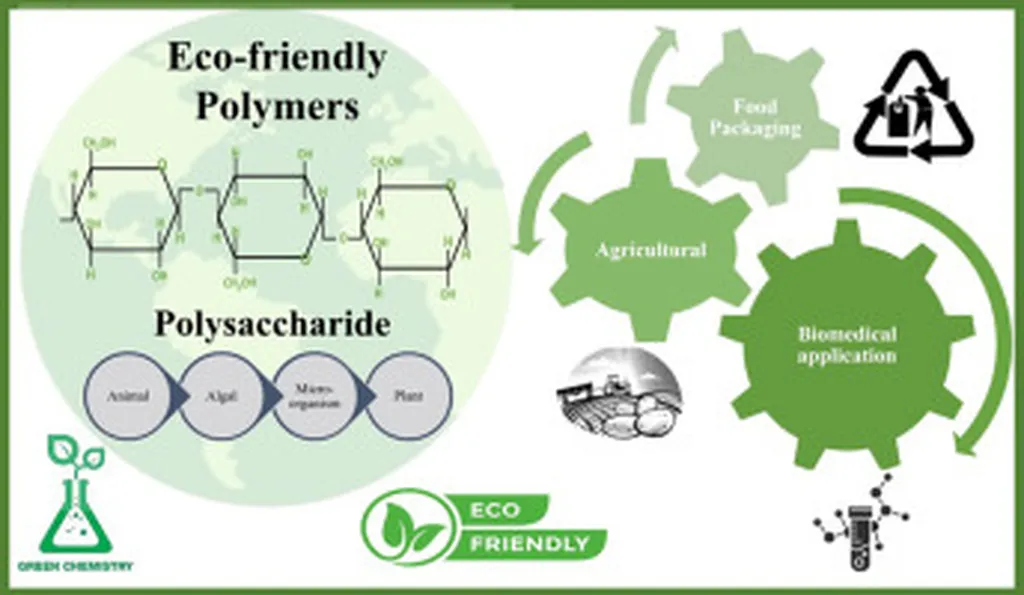In the pursuit of sustainable agriculture, researchers are turning to nature’s own building blocks to revolutionize how we deliver fungicides. A recent review published in the journal *Carbohydrate Polymer Technologies and Applications* (translated to English as *Carbohydrate Polymer Technologies and Applications*) sheds light on the promising role of polysaccharide-based carriers in eco-friendly fungicide delivery. Led by Sathish Kumar Venkatachalam from the Department of Microbiology at Vinayaka Mission’s Research Foundation in India, the study delves into the potential of chitosan, alginate, and cellulose as effective delivery systems, offering insights that could reshape agricultural practices and reduce environmental impact.
The demand for sustainable agricultural practices has never been more urgent. Traditional fungicide delivery methods often lead to excessive chemical use, which can harm the environment and contribute to pesticide resistance. Polysaccharide carriers, derived from natural sources, offer a promising alternative. These biopolymers can encapsulate fungicides, controlling their release and improving efficacy while minimizing environmental harm.
“Polysaccharide carriers present a unique opportunity to enhance fungicide performance while aligning with the principles of sustainable agriculture,” Venkatachalam explains. “By understanding the interactions between carrier composition, environmental conditions, and fungicide performance, we can design more effective and eco-friendly delivery systems.”
The review highlights the distinct advantages and limitations of chitosan, alginate, and cellulose. Chitosan, known for its antimicrobial properties, shows high loading capacities and controlled release profiles. Alginate, derived from seaweed, offers excellent biocompatibility and gel-forming abilities, making it ideal for encapsulation. Cellulose, the most abundant biopolymer on Earth, provides robust structural support and controlled release characteristics.
However, the study also notes variability in encapsulation efficiency and release kinetics among these polysaccharides. “The physicochemical properties of each polysaccharide influence their performance,” Venkatachalam adds. “Understanding these properties is crucial for optimizing fungicide delivery and ensuring consistent results.”
The commercial implications of this research are significant. As the agricultural sector increasingly adopts sustainable practices, the demand for eco-friendly fungicide formulations is expected to grow. Polysaccharide-based carriers could become a cornerstone of this shift, offering farmers effective tools to protect crops while minimizing environmental impact.
Looking ahead, the review suggests several future research directions. These include optimizing carrier synthesis and characterization, exploring novel polysaccharide sources, and investigating the long-term environmental impacts of these delivery systems. By addressing these areas, researchers can further enhance the effectiveness and sustainability of polysaccharide-based fungicide carriers.
In conclusion, the study by Venkatachalam and colleagues provides valuable insights into the potential of polysaccharide carriers for eco-friendly fungicide delivery. As the agricultural sector continues to evolve, these findings could pave the way for more sustainable and effective pest management strategies, benefiting both farmers and the environment.

